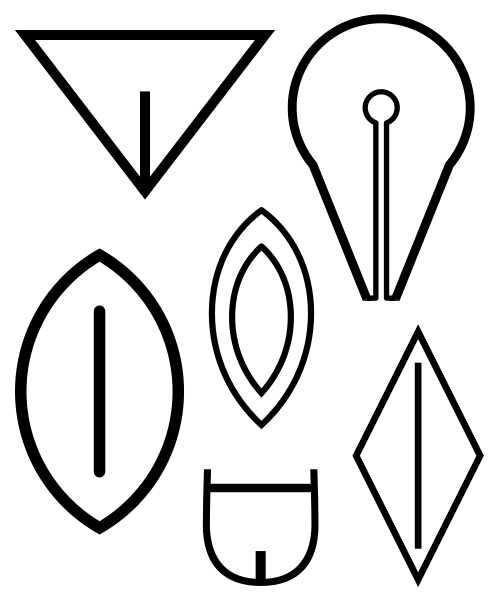Fail:Vulva symbols.svg

Size of this PNG preview of this SVG file: 500 × 600 piksel. Leraian-leraian lain: 200 × 240 piksel | 400 × 480 piksel | 640 × 768 piksel | 853 × 1,024 piksel | 1,707 × 2,048 piksel.
Fail asli (Fail SVG, ukuran dasar 500 × 600 piksel, saiz fail: 3 KB)
Sejarah fail
Klik pada tarikh/waktu untuk melihat rupa fail tersebut pada waktu itu.
| Tarikh/Waktu | Gambar kenit | Ukuran | Pengguna | Komen | |
|---|---|---|---|---|---|
| semasa | 03:20, 24 September 2022 |  | 500 × 600 (3 KB) | Smasongarrison | slimmed down with svgomg // Editing SVG source code using c:User:Rillke/SVGedit.js |
| 05:51, 5 April 2017 |  | 500 × 600 (4 KB) | AnonMoos | Reverted to version as of 11:32, 2 September 2008 (UTC) | |
| 20:38, 15 Januari 2017 |  | 938 × 1,125 (108 KB) | JMCC1 | error in egyptian symbol | |
| 11:32, 2 September 2008 |  | 500 × 600 (4 KB) | AnonMoos | tweaking most-recently added symbol for exact symmetry | |
| 22:55, 30 September 2007 |  | 500 × 600 (4 KB) | AnonMoos | adding further symbol | |
| 07:13, 4 September 2007 |  | 500 × 600 (3 KB) | AnonMoos | adding symbol | |
| 20:48, 26 Ogos 2007 |  | 500 × 600 (2 KB) | AnonMoos | Four symbolic representations of external female genitals as they have been used in various historical/cultural contexts: 1) Upper left: A schematized drawing of the pubic triangle; among other things, this is the earliest archaic form of the ancient Sum |
Penggunaan fail
Tiada laman yang menggunakan fail ini.
Penggunaan fail sejagat
Fail ini digunakan oleh wiki-wiki lain yang berikut:
- Penggunaan di als.wikipedia.org
- Penggunaan di ca.wikipedia.org
- Penggunaan di cs.wikipedia.org
- Penggunaan di de.wikipedia.org
- Penggunaan di en.wikipedia.org
- Penggunaan di en.wikiquote.org
- Penggunaan di es.wikipedia.org
- Penggunaan di fr.wikipedia.org
- Penggunaan di ja.wikipedia.org
- Penggunaan di pl.wikipedia.org
- Penggunaan di ru.wikipedia.org
- Penggunaan di sv.wikipedia.org
- Penggunaan di uk.wikipedia.org
- Penggunaan di uz.wikipedia.org
- Penggunaan di www.wikidata.org
- Penggunaan di zh.wikipedia.org
